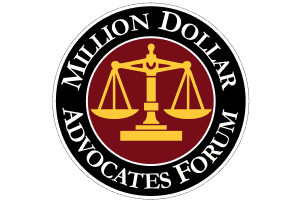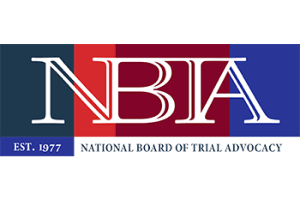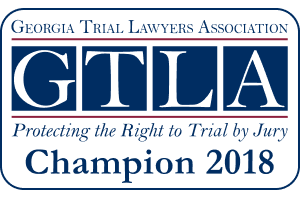Apportionment of Fault
4 Ideas for dealing with apportionment of fault in Georgia injury and death cases
In 2005, the Georgia legislature passed SB3, legislation to limit the rights of injured individuals, attempting to put a thumb on the scale in favor of insurance companies and corporations. There was much alarm among lawyers representing injured people. At that point I convened a weekly breakfast group of people smarter than me to brainstorm about how to deal with legislation that was carefully designed to kick people when they are down.
Some of the provisions that worried us, such as the cap on noneconomic damages in medical malpractice cases, eventually were held unconstitutional. Others, such as the offer of judgment, turned out to cut both ways and thus became not as big a deal as we expected.
Among the measures that still survive is the mandatory apportionment of fault and damages among both parties and non-parties who are identified by the defense. It can be deadly to a plaintiff’s case if not successfully addressed and overcome.
O.C.G.A. § 51-12-33, states:
- (A) Where an action is brought against one or more persons for injury to person or property and the plaintiff is to some degree responsible for the injury or damages claimed, the trier of fact, in its determination of the total amount of damages to be awarded, if any, shall determine the percentage of fault of the plaintiff and the judge shall reduce the amount of damages otherwise awarded to the plaintiff in proportion to his or her percentage of fault.
- (B) Where an action is brought against more than one person for injury to person or property, the trier of fact, in its determination of the total amount of damages to be awarded, if any, shall after a reduction of damages pursuant to subsection (a) of this Code section, if any, apportion its award of damages among the persons who are liable according to the percentage of fault of each person. Damages apportioned by the trier of fact as provided in this Code section shall be the liability of each person against whom they are awarded, shall not be a joint liability among the persons liable, and shall not be subject to any right of contribution.
- (C) In assessing percentages of fault, the trier of fact shall consider the fault of all persons or entities who contributed to the alleged injury or damages, regardless of whether the person or entity was, or could have been, named as a party to the suit.
- (D)(1) Negligence or fault of a nonparty shall be considered if the plaintiff entered into a settlement agreement with the nonparty or if a defending party gives notice not later than 120 days prior to the date of trial that a nonparty was wholly or partially at fault.
- (2) The notice shall be given by filing a pleading in the action designating the nonparty and setting forth the nonpartýs name and last known address, or the best identification of the nonparty which is possible under the circumstances, together with a brief statement of the basis for believing the nonparty to be at fault.
- (E) Nothing in this Code section shall eliminate or diminish any defenses or immunities which currently exist, except as expressly stated in this Code section.
- (F)(1) Assessments of percentages of fault of nonparties shall be used only in the determination of the percentage of fault of named parties.
- (2) Where fault is assessed against nonparties pursuant to this Code section, findings of fault shall not subject any nonparty to liability in any action or be introduced as evidence of liability in any action.
- (G) Notwithstanding the provisions of this Code section and any other provisions of law which might be construed to the contrary, the plaintiff shall not be entitled to receive any damages if the plaintiff is 50 percent or more responsible for the injury or damages claimed.
The purpose of apportionment statute is to ensure that each tortfeasor responsible for the plaintiff’s harm, including the plaintiff himself, be held responsible only for his or her respective share of the harm. See, e.g., Wade v. Allstate Fire and Cas. Co., — S.E.2d —-, 2013 WL 5943439 (Ga.App., decided Nov. 6, 2013).
For the first few years after the law passed, we believed that it required apportionment among defendants only if the plaintiff was negligent. But in Cavalier Convenience, Inc. v. Sarvis, 305 Ga.App. 141, 699 S.E.2d 104 (2010), the Court of Appeals held that apportionment of fault is required even when the plaintiff bears no fault.
It is not enough for a defendant to make a scattershot allegation of the fault of non-parties. Rather, it is the defendant’s burden to establish a rational basis for apportioning fault to a nonparty. Couch v. Red Roof Inns, Inc., 291 Ga. 359, 366(1), 729 S.E.2d 378 (2012).
The statute requires the defendant to give notice at least 120 days before trial identifying any non-party to whom it will ask the jury to apportion fault. However, there is nothing to prevent the trial court from scheduling trial less than 120 days after the notice is given, thereby negating the notice. Monitronics Intern., Inc. v. Veasley, 746 S.E.2d 793 (2013).
Fault may be apportioned between both negligent and intentional acts. Six Flags Over Georgia II, L.P. v. Martin, 320 Ga.App. 52, 743 S.E.2d 25 (2013). Accordingly, in a negligent security case arising out of a criminal assault on a customer, as jury apportion damages between the business, manager, and assailants based on percentage of fault. Accor North America, Inc. v. Todd, 318 Ga.App. 317, 733 S.E.2d 846 (2012).
Apportionment of fault is not allowed after default is entered on liability against defendant which has not given statutory notice of claim for apportionment. Freese II, Inc. v. Mitchell, 318 Ga.App. 662, 734 S.E.2d 491 (2012).
In products liability cases, if liability is imposed upon a defendant manufacturer under the doctrine of strict liability, principles of contributory and comparative negligence are inapplicable, and fault should not be apportioned between the plaintiff victim and the defendant manufacturer in awarding damages, but if a defendant manufacturer is found liable under the traditional theory of negligence, principles of contributory and comparative negligence do apply. Patterson v. Long, 321 Ga.App. 157, 741 S.E.2d 242 (2013).
Based upon the plain language of the statute, joint liability and the right of contribution no longer exist when damages have been apportioned by the trier of fact, but when there has been no such apportionment of damages a claim for contribution is allowed between settling joint tortfeasors. Zurich American Ins. Co. v. Heard, 321 Ga.App. 325, 740 S.E.2d 429 (2013).
Where employer and employee are both sued, and the employer’s liability is purely vicarious based on respondeat superior, there is no apportionment between the employer and employee. PN Exp., Inc. v. Zegel, 304 Ga.App. 672, 697 S.E.2d 226 (2010). But where there is evidence to support independent negligence claims against the employer, e.g., negligent hiring, training, retention, supervision or equipping of the employee in addition to vicarious liability, it is logical that the plaintiff should be allowed to argue for apportionment between all named parties as to their independent acts of negligence, including an employer’s negligence in hiring, training, retention and supervision of an employee defendant.
Inclusion of the employer’s independent acts of negligence is both a fair reading of the explicit meaning of the text of O.C.G.A. § 51-12-33 and good public policy. When the risk of tortious or criminal conduct is the very risk that made the derivatively liable party’s conduct negligent in the first place, allowing the occurrence of that foreseeable conduct to reduce the responsibility of the derivatively liable party undermines the incentive for that party to take precautions against this risk. When an employer, through negligence in hiring, training, supervision, etc., hires and dispatches an unsafe employee who causes injuries to an innocent member of the public, apportionment of fault should include the negligent hiring, training, supervision, etc.
Consider, for example, the hypothetical case in which an employer knows the brakes on a vehicle are bad but orders an employee to drive the vehicle with bad brakes under threat of firing if he does not. The brakes fail, causing a crash when someone stops in front of him in traffic. If only the negligence of the ill-equipped and powerless employee driver and a slightly imperfect plaintiff is weighed in the balance, the jury may find a 60-40 or even 50-50 split, so that the injured and virtually blameless plaintiff would get little or nothing for his injury.
But if the jury is allowed to apportion fault based on a root cause analysis of the negligence of the employer who creates the situation by dispatching an employee to drive a truck with bad brakes in traffic is also weighed in the scales, then the equation may shift dramatically in favor of the injured plaintiff.
When evidence is structured to show how a primary defendant’s choices over time set up the situation in which even a criminal attack occurred on its premises and approaches, even conservative suburban jurors can apportion fault to companies that were in the best position to prevent a tragic injury. For example, recently in Cobb County awarded $35 million for a brain injury resulting from a gang attack on the entry road to Six Flags Over Georgia. Due to careful preparation and presentation of evidence about the degree of Six Flags’ knowledge of gang activity among its employees and on the entry road, the jury apportioned 92% of fault to Six Flags and 8% to its thug employees who carried out the assault after they clocked out.
Without revealing too much to opposing counsel who may read this, there are four points that can be discussed:
1.In any case where there may be an issue of apportionment of fault and damages, it is important to carefully evaluate well in advance the jury instructions and verdict form in order to comply with the statute.
2.Develop evidence that non-parties who might be designated by the defendant bore no legal fault with a view toward filing a motion for partial summary judgment to exclude a claim to apportion to them on the same grounds – other than immunity — that the non-parties could present if they were in the case.
3.Where it fits the case, develop evidence of an employer’s independent negligence in order to argue for apportionment between employer and employee. The total of their percentages of fault may exceed the percentage attributed to them together as a single unit.
4.Think in terms of the history of modern epidemiology. When Dr. John Snow analyzed the patterns of a deadly cholera outbreak in London, he figured out that it must have originated with the water from a single well in Soho. When he had the pump handle removed from that well, the epidemic ground to a halt. Learn from Dr. Snow’s root cause analysis. Develop your detailed root cause analysis, figure out how the primary defendant easily could have prevented tragedy by exercising ordinary care, and present that with a timeline of the knowledge and choices of the primary defendant over a period of months or years that inexorably led to the tragic event and injury.












